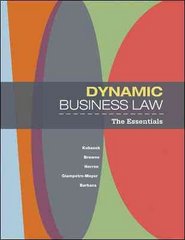Question
2. A gasoline refinery produces gas G using crude oil X and labor L as inputs. Let pX be the price of crude oil, pL
2. A gasoline refinery produces gas G using crude oil X and labor L as inputs. Let pX be the price of crude oil, pL the wage, and the production function:
G = f(X, L) = X + L
a)Does the firm's technology show increasing, constant, or decreasing returns to scale? Explain
b)Derive the firm's conditional factor demands for crude oil X(pX, pL, G) and labor L(pX, pL, G). Derive the refiner's total cost function C(G).
c)Let pX = 1 and pL = 1. Suppose the firm is the sole producer of gasoline on the market, and the demand for gasoline is G = 120 pG. How much the firm produces and what is the price of gasoline?
d)Now suppose there are 5 gasoline refineries on the market and they behave as perfectly competitive. Find how much is produced on the market and the competitive price of gasoline.
e)Gasoline production pollutes the environment. Each unit of gasoline creates $6 loss for the society. Find the socially optimal amount of gasoline consumption.
f)In order to address gasoline externalities, the government imposes a $6 tax per unit purchased on consumers. Calculate the new market equilibrium.
Step by Step Solution
There are 3 Steps involved in it
Step: 1

Get Instant Access to Expert-Tailored Solutions
See step-by-step solutions with expert insights and AI powered tools for academic success
Step: 2

Step: 3

Ace Your Homework with AI
Get the answers you need in no time with our AI-driven, step-by-step assistance
Get Started


